So, What to Wear under a Wetsuit in Cold Water? Well, to stay warm in cold water, wear a thermal base layer under your wetsuit. When diving or engaging in water activities in cold temperatures, it is essential to protect your body against the chilling effects of the water.
Wearing a wetsuit alone may not provide sufficient insulation, especially in frigid waters. Adding a thermal base layer underneath the wetsuit helps to trap body heat, keeping you warm and comfortable. The base layer should be made of materials like neoprene or polypropylene, which have excellent insulating properties and can retain warmth even when wet.
Additionally, opt for a snug fit to prevent water from entering and causing further cooling. By following these guidelines and wearing an appropriate base layer under your wetsuit, you can stay comfortable and enjoy your cold-water activities to the fullest.
Why Proper Clothing Is Important For Cold Water Activities
Proper clothing is essential for cold water activities, particularly when wearing a wetsuit. The right attire underneath provides insulation, comfort, and protection, ensuring an enjoyable and safe experience in cold water.
Importance Of Wearing Appropriate Clothing:
- Wearing the right clothing is crucial for cold water activities as it provides insulation, protection, and comfort.
- Appropriate clothing helps regulate body temperature and prevents hypothermia.
- Proper clothing allows for ease of movement and flexibility during water sports.
- It enhances buoyancy and reduces the risk of fatigue and muscle strains.
- Wearing the right clothing also protects the skin from chafing and abrasions caused by wetsuits.
The Impact Of Cold Water On The Body:
- Cold water poses various risks to the body, including hypothermia, decreased dexterity, and reduced cognitive function.
- Falling into cold water can cause a sudden shock to the system, leading to gasping and inhalation of water.
- Prolonged exposure to cold water can cause muscles to cramp and fatigue quickly.
- Cold water can numb the extremities, impairing fine motor skills and making it difficult to perform tasks effectively.
How Proper Clothing Can Enhance Comfort And Safety:
- The right clothing provides an additional layer of insulation, keeping the body warm and reducing the risk of hypothermia.
- Proper clothing helps retain body heat, allowing individuals to stay comfortable and focus on their activities.
- It improves buoyancy, aids in floatation, and reduces the effort required to stay afloat.
- Wearing appropriate clothing minimizes the risk of skin irritations, rashes, and abrasions caused by rubbing against wetsuits or gear.
- Proper attire ensures freedom of movement, enabling individuals to perform water sports without any hindrances.
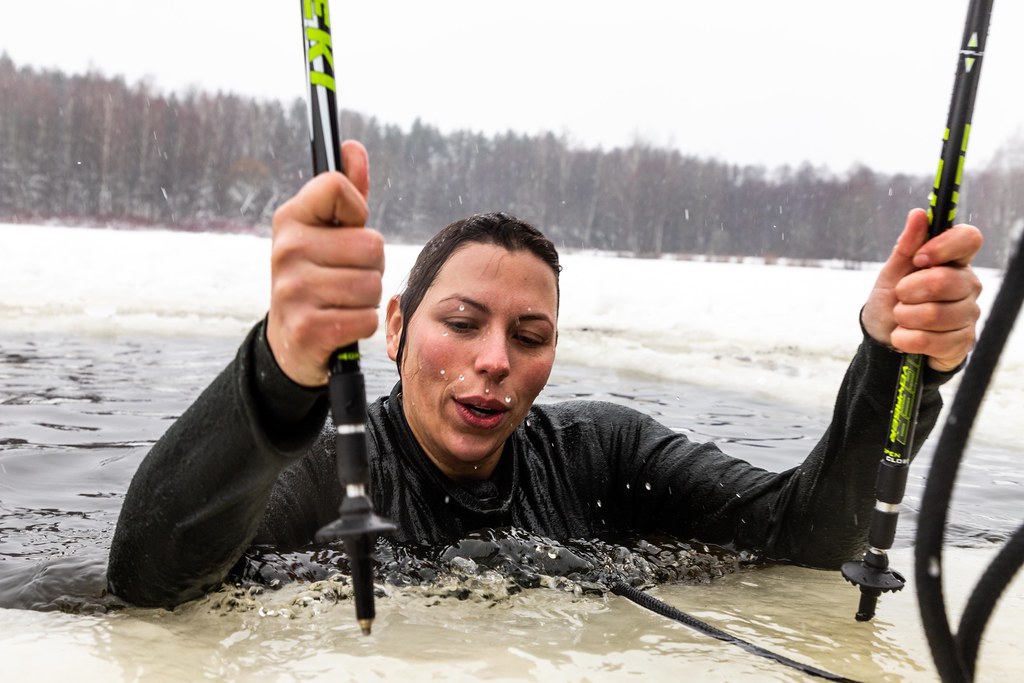
Base Layers: The Foundation For Warmth
Base layers are essential for staying warm in cold water when wearing a wetsuit. They provide the foundation for insulation and help regulate body temperature, ensuring comfort and protection during water activities.
When braving the cold waters, wearing the right base layers underneath your wetsuit is essential to ensure optimal warmth and comfort. Choosing the right fabric, utilizing moisture-wicking materials, and implementing proper layering techniques can make all the difference. Let’s dive in and explore how to stay cozy and protected during your aquatic adventures.
Choosing The Right Fabric For Base Layers:
- Merino wool: This natural fiber is known for its excellent insulation properties and moisture-wicking ability, making it a popular choice for cold-water activities.
- Synthetic materials: Fabrics like polyester and nylon offer great insulation, are quick-drying, and provide a snug fit that minimizes water penetration.
- Polypropylene: This lightweight material excels at moisture management, keeping you dry and warm in cold conditions.
Benefits Of Moisture-Wicking Materials:
- Efficient moisture management: Moisture-wicking fabrics draw sweat away from your body, allowing it to evaporate quickly. This keeps you dry and prevents the buildup of sweat, which can make you feel cold and uncomfortable.
- Thermoregulation: By keeping you dry, moisture-wicking materials help regulate your body temperature more effectively. They provide insulation when you need it and prevent overheating when you’re active.
- Reduced chafing: Moisture-wicking fabrics minimize friction against your skin, reducing the risk of chafing and irritation during prolonged use.
Layering Techniques For Optimal Insulation:
- Base layer: Start with a moisture-wicking base layer to keep your skin dry and help regulate your body temperature. Avoid cotton, as it retains moisture and can make you feel colder.
- Insulating layer: Add an insulating layer on top of your base layer to trap a layer of warm air against your body. Fleece or wool garments are excellent options for this layer.
- Outer shell: Complete your layering system with a waterproof and windproof outer shell to protect against water penetration, wind chill, and heat loss.
Remember, layering allows you to adjust your insulation level according to the conditions, so you can easily add or remove layers as needed. This versatile approach ensures maximum warmth and adaptability during your cold-water expeditions.
Now that you have a solid understanding of base layers and their role in keeping you warm under a wetsuit, it’s time to gear up and embrace the chilly waters while staying comfortable and protected. Happy exploring!
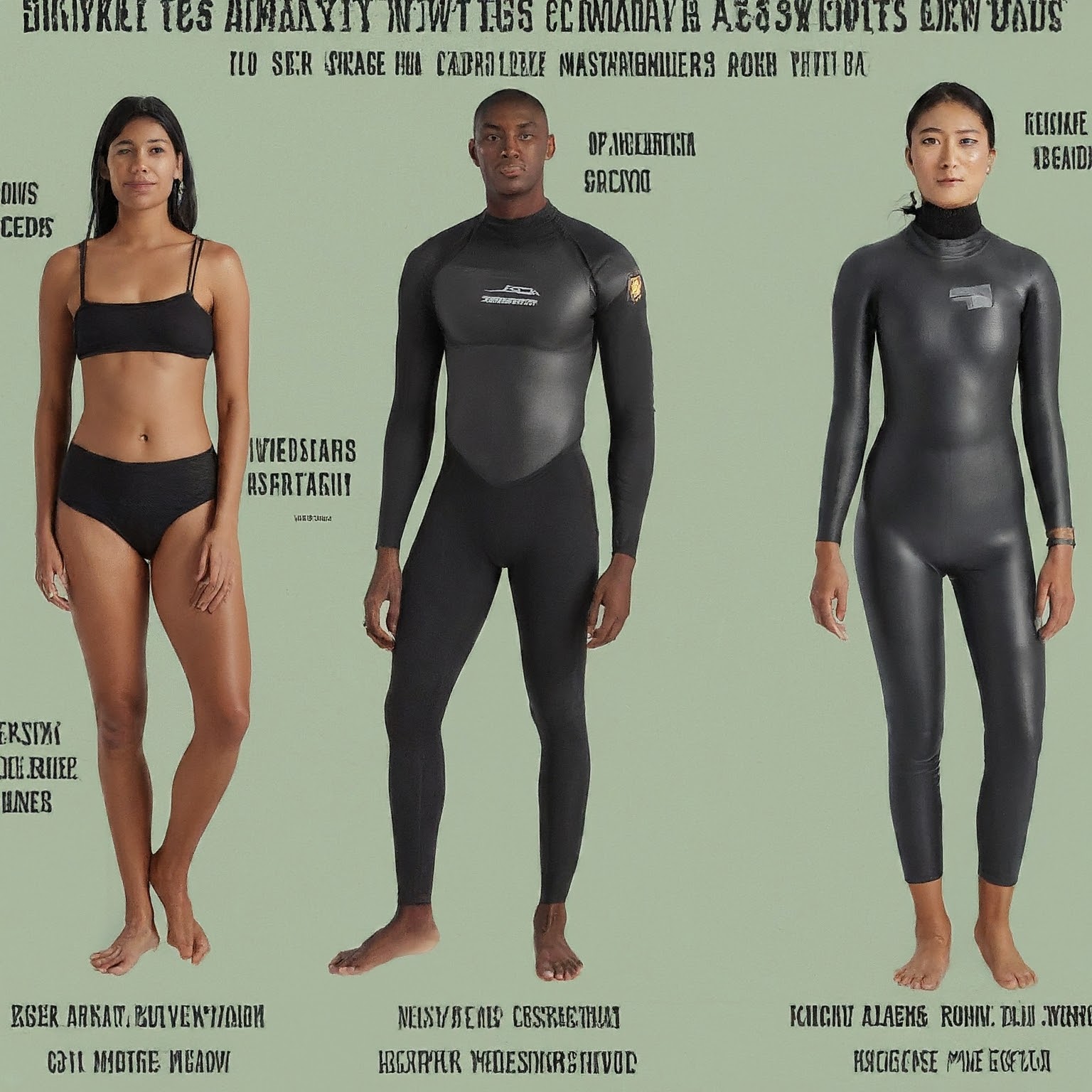
Insulation Layers: Adding Warmth And Protection
Insulation layers are essential for adding warmth and protection when wearing a wetsuit in cold water. These layers provide an extra barrier against the chill and help to maintain body temperature, ensuring a comfortable and enjoyable water experience.
When it comes to wetsuits, wearing the right layers underneath is crucial for staying warm and protected in cold water. Insulation layers not only provide warmth but also act as a barrier against the chilly temperatures and potential abrasions. Here, we will explore the different types of insulation layers you should consider, how to choose the right thickness based on your activity, and the key features to look for in insulation layers.
Types Of Insulation Layers To Consider:
- Neoprene rash guard: A neoprene rash guard is a thin layer that provides ample flexibility and insulation. It helps retain body heat while offering protection against chafing and rash. Ideal for water temperatures ranging from 60°f to 70°f.
- Thermal top and bottom: A thermal top and bottom set is designed to trap body heat and keep you warm. Made from insulating materials like fleece or polypropylene, these layers are suitable for temperatures below 60°f.
- Wetsuit shorts: Wetsuit shorts provide added insulation to your lower body without restricting movement. They are perfect for milder conditions or when you need extra warmth for your lower half.
- Wetsuit vest: A wetsuit vest adds an extra layer of insulation to your core, providing warmth without sacrificing mobility. It is an excellent option for activities that require more arm movement, such as surfing or kayaking.
- Neoprene gloves and booties: Neoprene gloves and booties are essential for protecting your extremities from the cold. These items keep your hands and feet warm and prevent frostbite, making them indispensable for cold-water sports.
How To Choose The Right Thickness For Your Activity:
- Consider the water temperature: The colder the water, the thicker the insulation layer you will need. Ensure you check the water temperature before selecting the appropriate thickness.
- Activity level: If you are engaging in high-intensity activities like surfing or diving, you may opt for a thinner insulation layer to prevent overheating. For more leisurely activities, choose a thicker layer to keep you comfortable.
- Personal preference: Some individuals are naturally more sensitive to cold than others. Consider your personal tolerance and choose a thickness that will provide sufficient warmth and comfort for your water adventure.
Features To Look For In Insulation Layers:
- Moisture-wicking properties: Look for insulation layers that have moisture-wicking properties to prevent sweat buildup and keep you dry. This feature helps regulate your body temperature and enhances overall comfort.
- Seamless construction: Insulation layers with seamless construction minimize chafing and irritation, ensuring a comfortable fit throughout your activity.
- Durability: Opt for insulation layers made from high-quality materials that can withstand the rigors of your water sports activities. Reinforced stitching and durable fabrics will increase the lifespan of your layers.
- Upf protection: If you plan to spend extended periods in the water, consider insulation layers that offer upf protection to shield your skin from harmful uv rays.
Choosing the right insulation layers is crucial for keeping you warm and comfortable during cold-water activities. Remember to consider the type of layer suitable for your needs, select the appropriate thickness based on the water temperature and activity, and prioritize features such as moisture-wicking, durability, and upf protection.
By properly layering underneath your wetsuit, you can ensure an enjoyable and safe experience, even in chilly waters.
Protective Gear: Safeguarding Your Body Against The Cold
Safeguard your body against the cold water with the right protective gear under a wetsuit. Stay warm and comfortable while enjoying your time in the water.
Importance Of Wearing Protective Gear Under A Wetsuit:
- Wearing protective gear under a wetsuit is crucial in cold water to safeguard your body against the freezing temperatures and potential risks. Here’s why:
- Insulation: Neoprene accessories provide an additional layer of insulation, minimizing heat loss and keeping you warmer during your water activities.
- Comfort: The right protective gear ensures a comfortable experience by preventing direct contact between your skin and the wetsuit. This prevents chafing and irritation, allowing you to focus on enjoying your time in the water.
- Protection from abrasions: Neoprene accessories like gloves and boots act as a barrier, shielding your skin from potential cuts, scrapes, and bruises caused by sharp rocks, coral, or other underwater hazards.
- Enhanced grip: Gloves not only protect your hands but also provide better grip when handling equipment or navigating slippery surfaces. This can be especially helpful while engaging in activities like surfing, diving, or kayaking.
Different Types Of Neoprene Accessories To Consider:
- When it comes to selecting protective gear for cold water sports, there are several neoprene accessories to consider:
- Gloves: Neoprene gloves offer insulation, protection, and dexterity. They help maintain warmth in your hands and fingers while allowing you to maintain a good grip and perform tasks effectively.
- Boots: Neoprene boots protect your feet from the cold water and provide insulation. They also feature sturdy soles, offering traction and protection against sharp objects on the sea floor.
- Hoods: A neoprene hood covers your head, neck, and ears, shielding them from the biting cold. By preventing heat loss from these areas, a hood helps maintain your overall body temperature.
Benefits Of Wearing Gloves, Boots, And Hoods:
- Wearing gloves, boots, and hoods during cold water activities brings numerous advantages:
- Temperature regulation: These accessories help retain body heat and prevent rapid heat loss in extremities. This improves overall comfort and allows you to stay in the water longer without discomfort.
- Protection against hypothermia: By reducing heat loss, gloves, boots, and hoods play a crucial role in preventing hypothermia, a condition resulting from prolonged exposure to cold temperatures.
- Injury prevention: Neoprene accessories act as a protective layer, shielding your hands, feet, and head from potential injuries caused by sharp objects or rough surfaces in the water.
- Enhanced performance: With proper insulation and protection, you can maintain better dexterity, grip, and mobility, enhancing your performance and allowing you to fully enjoy your water activities.
Wearing appropriate protective gear under a wetsuit is essential when venturing into cold water. Neoprene accessories like gloves, boots, and hoods provide insulation, protection, and improved performance, ensuring a comfortable and safe experience. By prioritizing your body’s safety and warmth, you can fully enjoy your cold water adventures without any worries.
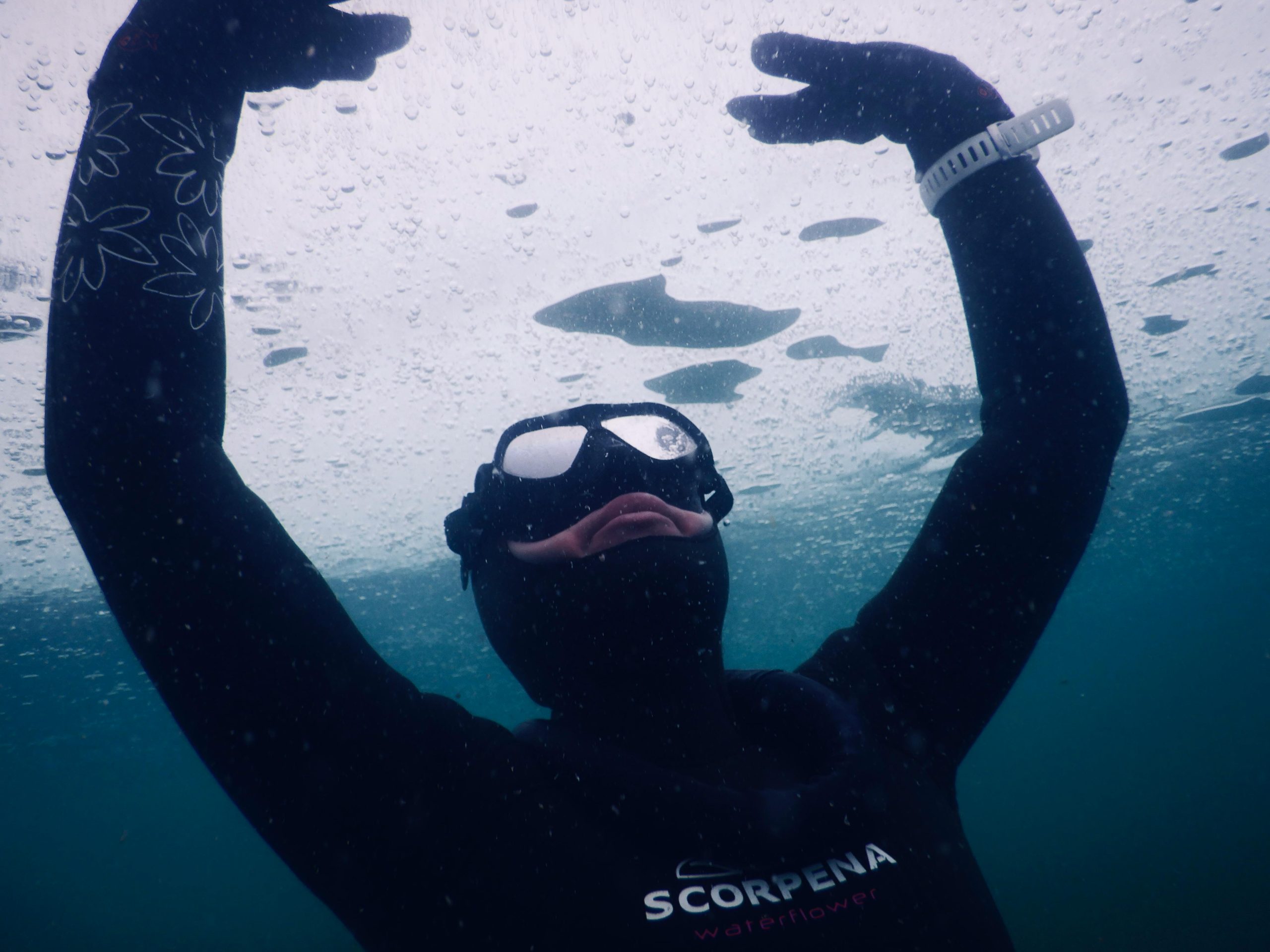
Protective gear that should be wear under wetsuit in cold weather
When venturing into cold water with your wetsuit, layering underneath becomes crucial for warmth and comfort. Here’s a breakdown of the best protective gear to consider, besides a rashguard (already covered previously):
Neoprene Gear:
Neoprene Shorts/Pants: These thicker undergarments made from neoprene, the same insulating material as your wetsuit, provide significant warmth for your core and legs. They’re ideal for cold water environments and come in various thicknesses depending on the water temperature.
Neoprene Vest: Similar to neoprene shorts, a vest adds extra insulation specifically to your torso, which tends to lose heat faster. This is a great option for very cold water conditions.
Thermal Undergarments:
- Thermal Shirts and Leggings: Made from synthetic materials like merino wool or polyester fleece, these thermals offer excellent warmth under a wetsuit. Choose tight-fitting options to prevent bunching and ensure they’re quick-drying to avoid staying damp.
Additional Considerations:
- Fleece Tops: While not neoprene, thin fleece tops can provide some extra warmth, especially in moderately cold water. However, ensure they’re water-resistant and form-fitting for a good fit under the wetsuit.
- Neoprene Hood: A neoprene hood can help to retain heat around the head and neck, which are areas where heat loss is significant in cold water.
- Neoprene Gloves and Socks: Neoprene gloves and socks can keep your hands and feet warm, providing additional insulation against cold water.
- Vest or Jacket: A neoprene vest or jacket can be worn over your thermal base layer for extra warmth, particularly in extremely cold conditions.
- Earplugs: In very cold water, wearing earplugs can help prevent the discomfort of cold water entering the ears and also reduce the risk of ear infections.
- Wetsuit Liner: Some wetsuits come with built-in thermal liners, but you can also purchase separate wetsuit liners to add warmth under your wetsuit.
- Sunscreen: Though not for warmth, in cold weather, sun reflecting off the water can still cause sunburn. Applying waterproof sunscreen to exposed skin is essential for protection.
General Tips:
Material Matters: Avoid cotton underwear or bulky clothing under your wetsuit. Cotton absorbs water and makes you colder, while bulky clothes create air gaps that defeat the wetsuit’s insulating properties. Opt for synthetic, quick-drying materials like polyester, nylon, or merino wool.
Layering Strategy: The colder the water, the more layers you might need. Start with a thin rashguard or thermals and add a neoprene vest or shorts for extra warmth in very cold conditions.
Fit is Key: Ensure all undergarments fit snugly but comfortably. Loose clothing will trap water and reduce warmth, while tight clothing can restrict movement.
Remember, prioritize warmth and comfort based on the water temperature. Always check the forecast and choose the layering system that best suits your needs for a safe and enjoyable cold-water adventure.
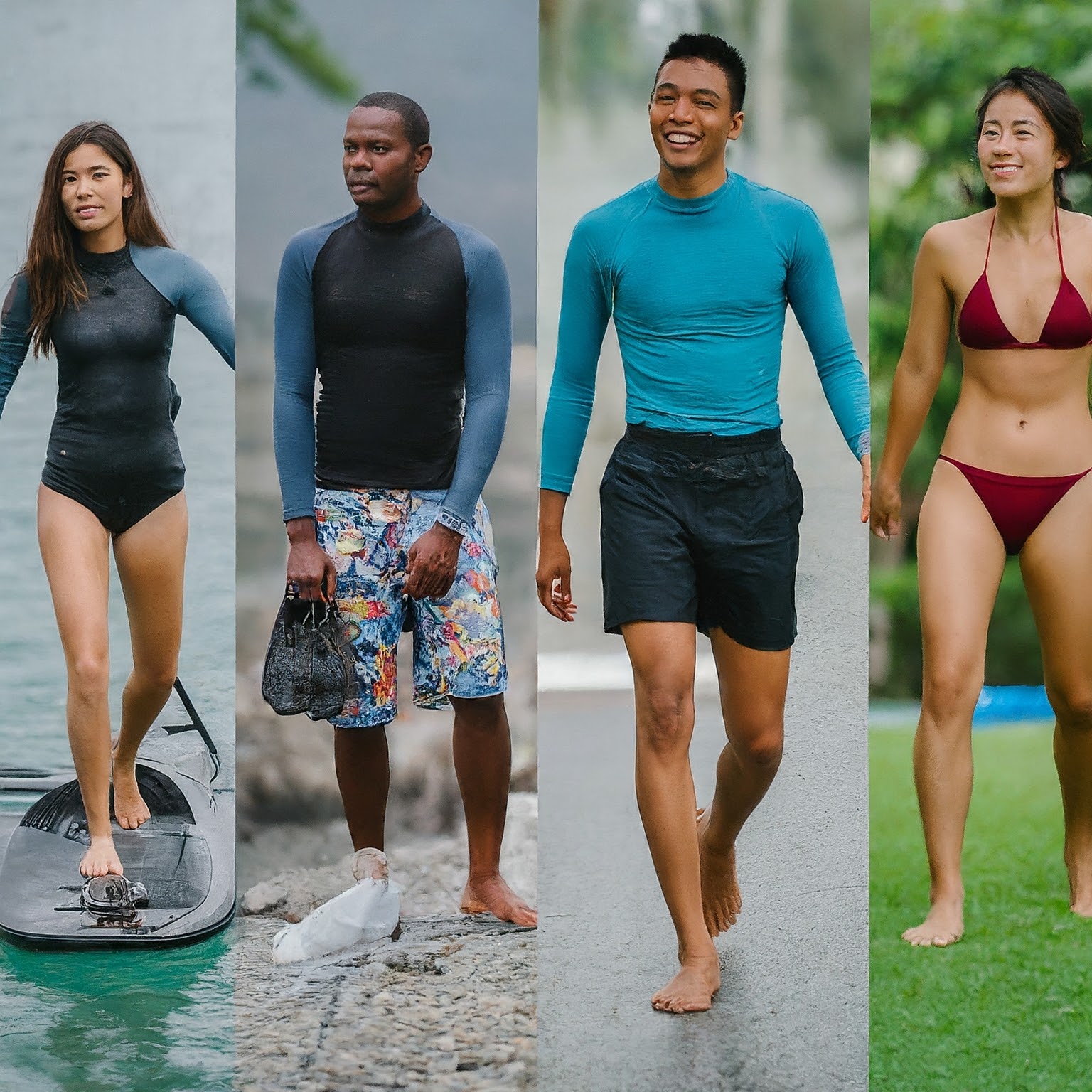
What are you supposed to wear under a wetsuit?
What you wear under a wetsuit can vary depending on personal preference, the type of wetsuit, and the water conditions. Here are some common options:
Swimsuit or Board Shorts: Many people opt to wear a swimsuit or board shorts under their wetsuit for comfort and modesty. These items are lightweight and quick-drying.
Rash Guard: A rash guard can be worn under a wetsuit to provide an additional layer of protection against chafing and irritation. It can also help wick away moisture and keep you comfortable during long sessions in the water.
Neoprene Shorts or Pants: Some prefer to wear neoprene shorts or pants under their wetsuit, especially in colder water conditions, to provide extra insulation for the lower body.
Thermal Base Layers: In colder water temperatures, wearing thermal base layers made of materials like polypropylene or merino wool can help retain body heat and keep you warm under your wetsuit.
Neoprene Vest or Top: For added warmth, particularly in colder conditions, you can wear a neoprene vest or top under your wetsuit. This provides additional insulation for the torso.
No Shirt: Some individuals prefer not to wear anything under their wetsuit, especially in warmer water conditions. Wetsuits are designed to be worn directly against the skin for optimal insulation and flexibility.
Earplugs and Sunscreen: While not worn under the wetsuit, it’s essential to remember to wear earplugs to protect your ears from cold water and sunscreen to protect exposed skin from the sun’s harmful rays.
Ultimately, the choice of what to wear under a wetsuit depends on personal preference, comfort, and the specific conditions you’ll be facing. It’s essential to choose garments that provide adequate insulation without restricting movement or causing discomfort.
What is recommended to wear under a wetsuit?
What you wear under a wetsuit depends on a few factors, but in most cases, you don’t necessarily need anything! Here’s a breakdown:
Going commando: This is actually the most common option for experienced wetsuit wearers. Modern wetsuits are designed with smooth inner linings to minimize chafing, and a thin layer of water trapped between the suit and your skin actually helps with insulation.
Comfort and Hygiene:
Rashguard/Rash Vest: A thin, tight-fitting shirt made from Lycra or spandex. It provides protection against minor abrasions from seams and some extra warmth in cool water.
Swimwear (bikini, trunks, briefs): Ideal for comfort and hygiene, especially if renting a wetsuit. Choose quick-drying synthetics like nylon or polyester.
Extra Warmth:
- Neoprene Shorts/Pants: Thicker than rashguards, these provide significant core and leg warmth in cold water.
- Neoprene Vest: Similar to shorts but focuses on torso insulation.
- Thermals: Tight-fitting thermals made from merino wool or polyester fleece offer excellent warmth but must be quick-drying.
Important Note:
- Avoid bulky clothing or cotton underwear. They trap water and defeat the wetsuit’s insulation.
- Opt for synthetic, quick-drying materials for all under-wetsuit layers.
Ultimately, comfort and water temperature are key. Try different options to see what works best for you!
Related Topics –
What to Wear Under Wetsuit to Keep Warm: A Guide for All Watersports
What to Wear Under Wetsuit Male: Unlocking Ultimate Comfort
What to Wear Under Wetsuit Female: The Ultimate Guide to Staying Comfortable and Stylish
Layering Techniques: Maximizing Warmth And Flexibility
Layering techniques are essential when it comes to staying warm and flexible in cold water while wearing a wetsuit. Discover how to maximize warmth by knowing what to wear underneath your wetsuit and achieve ultimate comfort and protection.
When it comes to braving cold water while wearing a wetsuit, layering is key to keeping warm and maintaining flexibility. Choosing the right combination of clothing items can make a significant difference in your comfort levels while immersing yourself in chilly waters.
In this segment, we will discuss the proper order of layering clothing items, how to avoid bulkiness and restrictiveness, and provide tips for adjusting layers based on water temperature.
Proper Order Of Layering Clothing Items:
- Base layer: Start with a thin, moisture-wicking base layer to ensure that sweat is drawn away from your skin, keeping you dry and reducing the risk of hypothermia. Opt for materials such as polypropylene or merino wool for optimal insulation.
- Insulating layer: Next, add an insulating layer to trap warm air close to your body. This layer should be thicker than your base layer and can be made of materials like fleece or neoprene. Look for garments with proper fitting to avoid excess bulkiness.
- Wetsuit: The wetsuit itself acts as an additional insulation layer, providing a barrier between your body and the cold water. Choose a wetsuit that fits snugly but allows for freedom of movement.
- Outer layer: Depending on the weather conditions, you may need an outer layer to shield yourself from wind and water splashes. A waterproof and windproof jacket or a neoprene top can be used as the outermost layer.
How To Avoid Bulkiness And Restrictiveness:
- Opt for well-fitting clothing items: Make sure each layer fits well, without excess fabric that can lead to uncomfortable bulkiness. Avoid loose or oversized garments that restrict movement.
- Consider layer thickness: Ensure that each layer is appropriately sized and not too thick, as this can limit flexibility and hinder your ability to move freely in the water.
- Choose flexible materials: Look for clothing items made from stretchable and flexible materials to allow for a wide range of motion. This will prevent any restrictions on your movements.
- Test mobility: Before heading into the water, perform a range of movements to ensure that your layers do not restrict your arms, legs, or torso. This will help you identify any adjustments needed for optimal comfort.
Tips For Adjusting Layers Based On Water Temperature:
- Cold water (below 50°f/10°c): Consider adding an extra insulating layer or thicker wetsuit to provide additional warmth. Pay attention to your extremities by wearing neoprene gloves and booties to protect against frostbite.
- Cool water (50-60°f/10-15.5°c): Maintain the base layer and wetsuit combination, but you may opt for a lighter insulating layer. Layering with rash guards or neoprene shorts can provide added warmth without bulk.
- Mild water (60-70°f/15.5-21°c): You may choose to wear only the base layer and wetsuit in these conditions. Consider using thinner neoprene or lycra materials for flexibility.
- Warm water (above 70°f/21°c): Depending on personal preference, you can choose to forgo additional layers and wear only the wetsuit for protection against abrasions and the sun’s harmful rays.
By following these layering techniques, you can maximize warmth and flexibility while wearing a wetsuit in cold water. Remember to adjust your layers based on the water temperature to ensure comfort and safety. Stay warm, stay flexible, and enjoy your cold-water adventures!
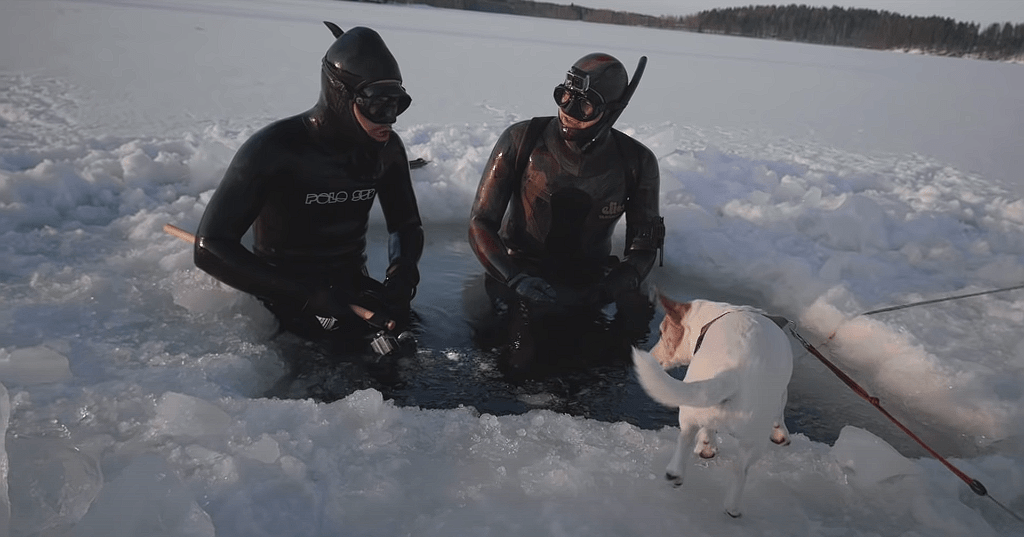
Accessories And Extras: Enhancing Comfort And Functionality
Enhance your comfort and functionality in cold water with the right accessories and extras to wear under your wetsuit. Stay warm and enjoy your water activities with these essential items that offer extra insulation and protection.
Whether you’re a seasoned surfer or a beginner braving the cold waters, wearing the right accessories underneath your wetsuit can make all the difference in terms of comfort and functionality. In this section, we will explore the benefits of wearing rash guards and swim caps, the considerations for face masks and sunglasses, and the importance of using sunscreen and lip balm for added protection.
Benefits Of Wearing Rash Guards And Swim Caps:
- Rash guards provide an additional layer of insulation and protect your skin from chafing against the wetsuit. Their snug fit also prevents water from seeping in, keeping you warmer for longer.
- Swim caps help trap a thin layer of water between your scalp and the cap, which acts as an insulator to keep your head warm. They also reduce drag in the water, enhancing your speed and performance.
Considerations For Face Masks And Sunglasses:
- Face masks are essential for protecting your face from the cold water and harsh winds. Look for masks made with neoprene or similar materials that provide insulation and are designed for water sports. They should fit snugly without restricting your movement or visibility.
- Sunglasses with polarized lenses are ideal for cutting glare and protecting your eyes from harmful uv rays. Look for models specifically designed for water sports, such as surf sunglasses, which offer better grip to prevent them from slipping off your face.
Using Sunscreen And Lip Balm For Added Protection:
- Applying sunscreen before heading out into the water is crucial, even on cloudy days. Look for a water-resistant formula with a high spf to protect your skin from the sun’s harmful rays. Make sure to choose a sunscreen that is safe for the marine environment.
- Don’t forget to protect your lips as well! Use a lip balm with spf to prevent chapping and sunburn. Look for moisturizing formulas that are also water-resistant.
By investing in the right accessories and extras, you can enhance your comfort and functionality while braving the cold waters. Remember to choose high-quality products that are designed for water sports and prioritize your safety and well-being. Stay warm, protected, and enjoy your time in the water!
Maintenance And Care: Prolonging The Lifespan Of Your Clothing
Prolong the lifespan of your clothing by properly maintaining and caring for them. Discover what to wear under a wetsuit in cold water to stay warm and comfortable.
Caring for your clothing is essential not only for hygiene purposes but also for ensuring that your gear lasts as long as possible. By following these simple maintenance and care tips, you can maximize the lifespan of your clothing and continue enjoying your cold-water adventures for years to come.
How To Properly Clean And Store Your Clothing:
- Rinse with freshwater after each use: To remove any saltwater or chlorine residue, thoroughly rinse your clothing with freshwater immediately after every session.
- Hand wash with mild detergent: Fill a basin with lukewarm water and add a small amount of mild detergent. Gently hand wash your clothing, paying attention to any particularly dirty or stained areas.
- Avoid harsh chemicals and bleach: Harsh chemicals and bleach can damage the fabric and reduce its lifespan. Stick to mild detergents specifically formulated for wetsuit cleaning.
- Hang to dry out of direct sunlight: Hang your clothing in a well-ventilated area, away from direct sunlight. Direct sunlight can cause the fabric to deteriorate and lose its flexibility.
- Avoid machine drying: Machine drying can shrink or damage wetsuits and undergarments. Allow them to air dry completely before storing.
Tips For Preventing Odors And Mold Growth:
- Dry thoroughly between uses: Make sure your clothing is completely dry before storing to prevent the growth of mold and unpleasant odors.
- Use odor-neutralizing products: Place odor-neutralizing products, such as baking soda or specially designed wetsuit deodorizers, inside your storage bag or container to absorb any lingering odors.
- Store in a dry, cool place: Opt for a well-ventilated storage area with low humidity levels to prevent mold growth. Avoid storing your clothing in damp areas such as basements.
- Regularly inspect and clean zippers: Check and clean the zippers on your clothing regularly to ensure they remain in good working condition. Use a toothbrush and freshwater to remove any sand, salt, or debris that may affect their functionality.
When To Replace Worn-Out Gear:
- Signs of excessive wear and tear: Inspect your clothing regularly for signs of excessive wear and tear, such as fraying seams, holes, or thin areas. These can compromise their effectiveness and indicate the need for replacement.
- Loss of insulation properties: If your clothing no longer provides the same level of insulation as when it was new, it may be time to invest in a replacement. Reduced insulation can lead to discomfort and increased susceptibility to cold temperatures.
- Decreased flexibility and elasticity: Over time, the fabric of your clothing may lose its flexibility and elasticity, impeding your range of motion and compromising its overall performance. Consider replacing it if you notice a significant decline in these characteristics.
By adhering to a proper maintenance routine, preventing odors and mold growth, and recognizing when gear needs replacement, you can ensure that your undergarments and wetsuits remain in excellent condition and continue to protect you in the demanding conditions of cold-water environments.
Final Thoughts: Ensuring A Comfortable And Safe Cold Water Experience
Ensure a comfortable and safe cold water experience by wearing the right undergarments beneath your wetsuit. These layers provide insulation, moisture wicking, and protection, keeping you warm and comfortable during your water activities.
Importance Of Investing In Quality Clothing
- Investing in high-quality clothing is crucial for a comfortable and safe cold water experience while wearing a wetsuit.
- Quality clothing provides better insulation, keeping your body warm and protected from the cold water elements.
- It helps regulate your body temperature, preventing hypothermia and ensuring you can enjoy your water activities for extended periods.
- Quality materials also offer enhanced flexibility and range of motion, allowing for better performance and maneuverability in the water.
- Long-lasting durability reduces the need for frequent replacements, ultimately saving you money in the long run.
The Impact Of Proper Clothing On Performance
- Wearing appropriate clothing underneath your wetsuit can significantly enhance your performance in cold water.
- Quality base layers provide added insulation without restricting movement, allowing you to maintain your agility and flexibility.
- Sweat-wicking fabrics help regulate body temperature, preventing discomfort caused by trapped moisture.
- Improved insulation and comfort enable you to stay focused on your activity, leading to better endurance and overall performance.
- Proper clothing can also minimize the risk of chafing, irritation, and discomfort, allowing you to fully enjoy your cold water adventures.
Taking Care Of Your Body And Gear For Future Adventures
- Taking care of your body and gear after a cold water experience is essential for future adventures.
- Rinse your clothing thoroughly with fresh water after each use to remove any salt, sand, or debris that could damage the material.
- Properly air dry your gear, avoiding direct sunlight or heat sources that could weaken the fabric or cause shrinkage.
- Store your clothing in a cool and dry place, away from direct sunlight and excessive humidity, to maintain its durability.
- Regularly inspect your clothing for any signs of wear and tear, ensuring it remains in optimal condition for your next cold water adventure.
- Taking care of your body by properly hydrating, warming up before activities, and using moisturizers can contribute to a comfortable and enjoyable experience.
Remember, investing in quality clothing, understanding its impact on performance, and taking care of your body and gear are essential for ensuring a comfortable, safe, and enjoyable cold water experience. Equip yourself with the right gear, stay warm, and embrace the exhilarating world of cold water activities.
Frequently Asked Questions On What To Wear Under A Wetsuit In Cold Water
Q: What Should I Wear Under A Wetsuit In Cold Water?
A: Wearing a wetsuit under your wetsuit in cold water can provide an extra layer of insulation. It is recommended to wear a thermal rash guard or a wetsuit liner to keep you warm. Avoid cotton clothing as it absorbs water and makes you feel colder.
Q: Can I Wear A Swimsuit Under A Wetsuit In Cold Water?
A: Yes, you can wear a swimsuit under a wetsuit in cold water, but it may not provide enough warmth. To maximize insulation, opt for a thermal rash guard or a wetsuit liner that is specifically designed to keep you warm in cold water conditions.
Q: What Is The Best Material To Wear Under A Wetsuit In Cold Water?
A: The best material to wear under a wetsuit in cold water is neoprene. Neoprene provides insulation and helps retain body heat. Additionally, consider wearing a thermal rash guard or a wetsuit liner made of neoprene or a similar material for extra warmth and comfort.
Conclusion
Choosing the right clothing to wear under your wetsuit in cold water is crucial for a comfortable and enjoyable experience. By considering the temperature, thickness, and type of wetsuit you have, you can determine what garments will provide the necessary warmth and protection.
Base layers made from materials like neoprene or polypropylene are excellent options, as they offer good insulation and will wick away moisture from your skin. Don’t forget to also consider wearing gloves and booties to further protect your extremities from the cold.
Remember, layering is key, so you can adjust your clothing based on the conditions and your own comfort level. Whether you’re a novice or experienced cold water diver, having the appropriate clothing underneath your wetsuit will enhance your overall diving experience and keep you comfortable throughout your adventure.
So, gear up wisely, stay warm, and get ready to explore the wonders that cold water diving has to offer.
Reference –
What to wear under wetsuit in cold temps?

